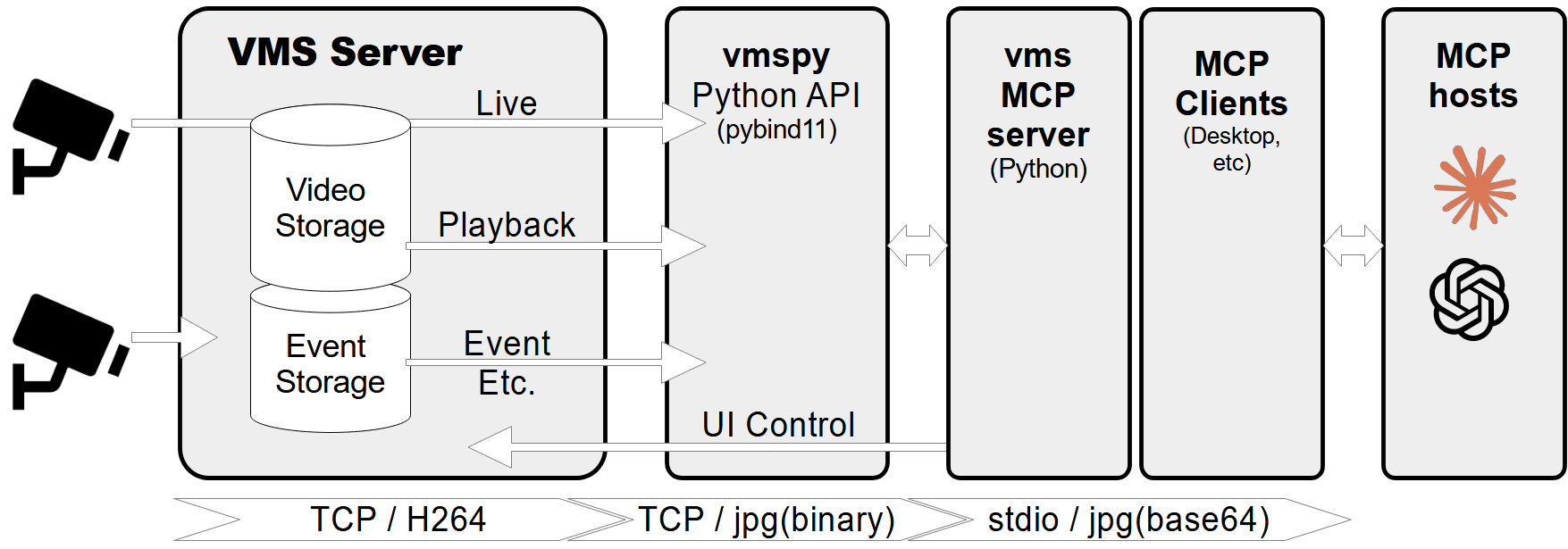VMS Integration
STDIOMCP server for CCTV systems to retrieve video streams and control VMS software.
MCP server for CCTV systems to retrieve video streams and control VMS software.
A Model Context Protocol (MCP) server designed to connect to a CCTV recording program (VMS) to retrieve recorded and live video streams. It also provides tools to control the VMS software, such as showing live or playback dialogs for specific channels at specified times.

vmspy library (for VMS integration)Pillow library (for image processing)If you want to use mcp-vms with Claude desktop, you need to set up the claude_desktop_config.json file as follows:
{ "mcpServers": { "vms": { "command": "uv", "args": [ "--directory", "X:\\path\\to\\mcp-vms", "run", "mcp_vms.py" ] } } }
The server uses the following default configuration for connecting to the VMS:
vms_config = { 'img_width': 320, 'img_height': 240, 'pixel_format': 'RGB', 'url': '127.0.0.1', 'port': 3300, 'access_id': 'admin', 'access_pw': 'admin', }
Run the following command in PowerShell to install UV:
powershell -ExecutionPolicy ByPass -c "irm https://astral.sh/uv/install.ps1 | iex"
For alternative installation methods, see the official UV documentation.
Download and install the VMS server from:
http://surveillance-logic.com/en/download.html
(Required before using this MCP server)
Download the vmspy library:
vmspy1.4-python3.12-x64.zip
Extract the contents into your mcp_vms directory
The mcp-vms directory should look like this:
mcp-vms/ ├── .gitignore ├── .python-version ├── LICENSE ├── README.md ├── pyproject.toml ├── uv.lock ├── mcp_vms.py # Main server implementation ├── mcp_vms_config.py # VMS connection configuration ├── vmspy.pyd # VMS Python library ├── avcodec-61.dll # FFmpeg libraries ├── avutil-59.dll ├── swresample-5.dll ├── swscale-8.dll